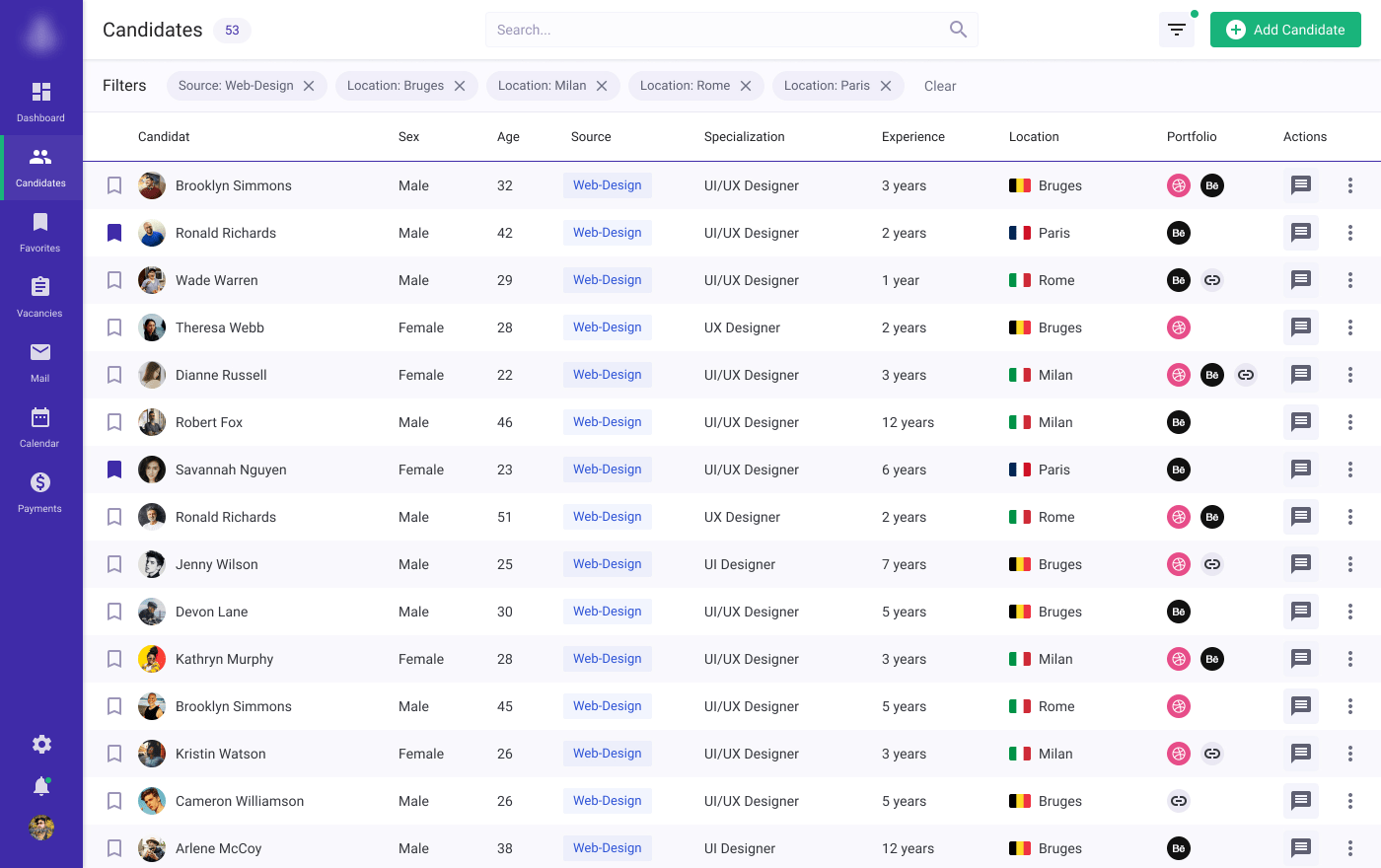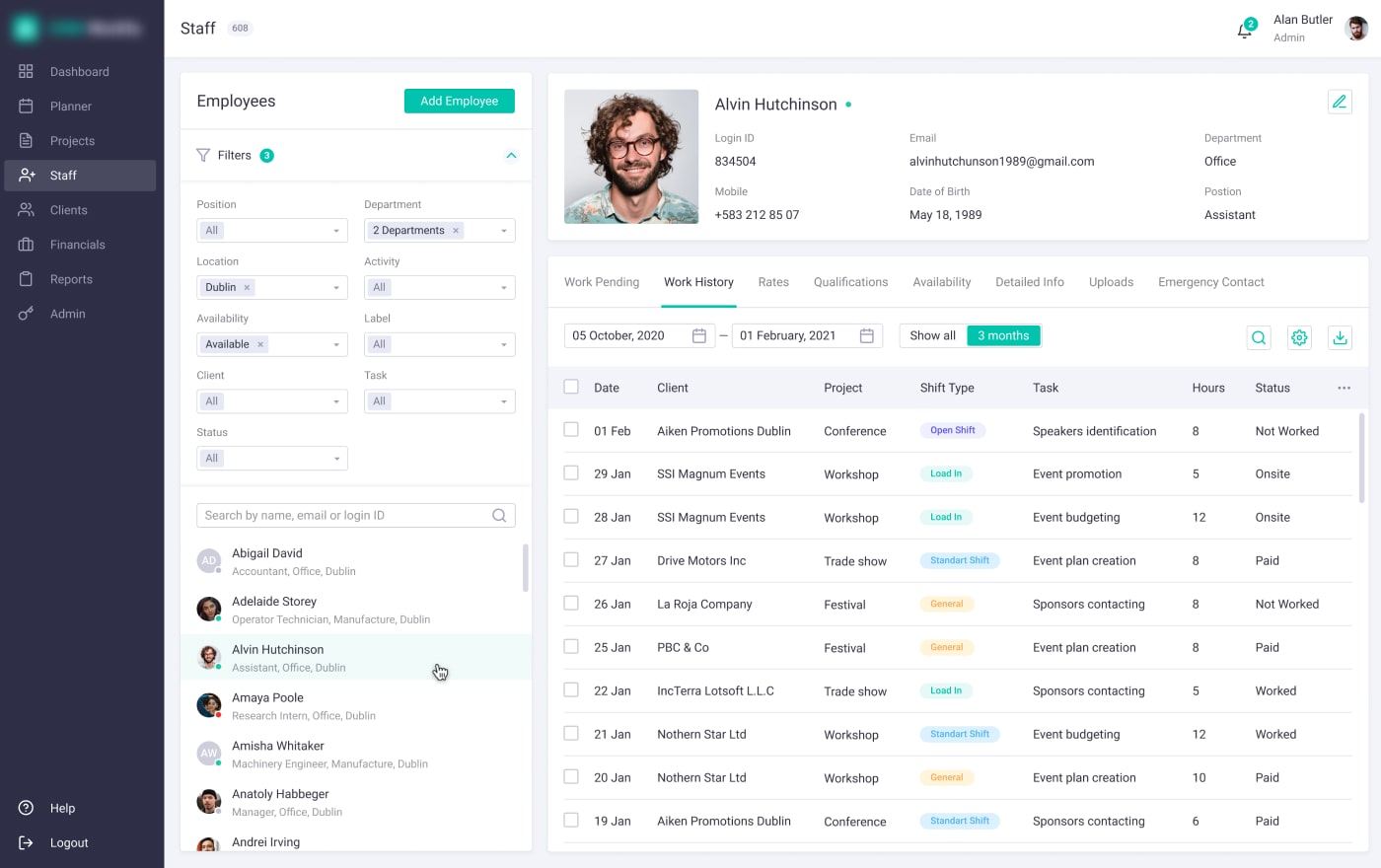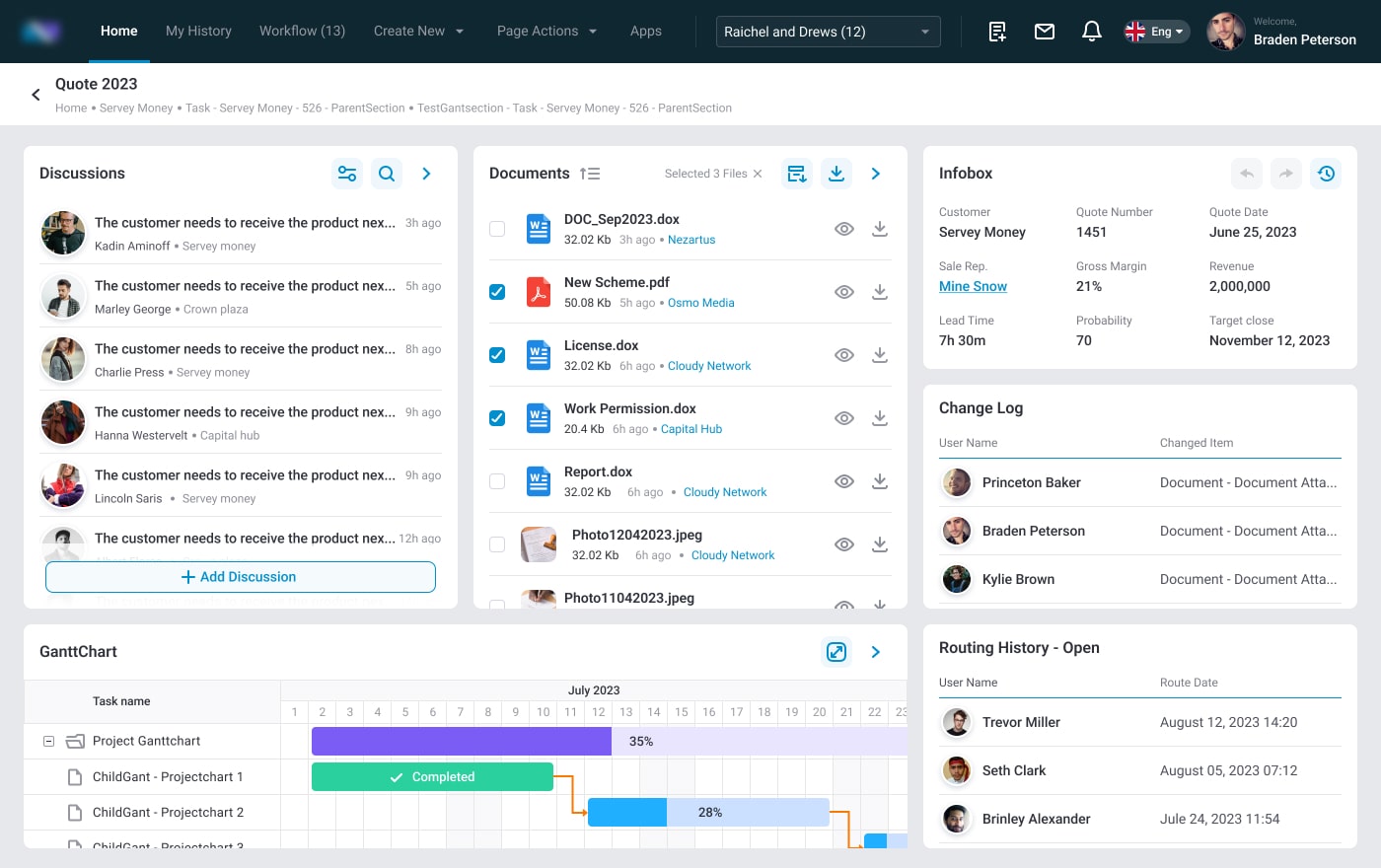Summary
Effective resource, workforce, and workflow management are essential for optimizing hybrid work environments. Resource management ensures the right allocation of talent and tools, workforce management focuses on aligning employee skills with business objectives, and workflow management streamlines processes for seamless collaboration.
Integrating these components enhances productivity, transparency, and adaptability, enabling organizations to thrive in a hybrid work setting.
5 years ago the whole world changed because of the Coronavirus outbreak, and more and more businesses started to work remotely. Since then, most of the companies that were able to allow their employees to not work on-site changed their whole perspective on remote and hybrid work. And nowadays, hybrid work is no longer a trend – it’s the new normal.
This shift has brought about numerous benefits, including increased flexibility for employees, reduced commuting times, a better work-life balance, and potential cost savings on office space. But along with the benefits come challenges in managing people, tasks, and processes proficiently. Without the right tools, hybrid teams can suffer from communication breakdowns, inefficient workflows, and burnout. That is why, many businesses are still struggling with the transition. This is where resource management, workforce management, and workflow management software come together to form a powerhouse of efficiency. So, let’s explore how these solutions intersect and why adopting the right combination can help your business to thrive in a hybrid work era.
Why Hybrid Work Is Still a Work in Progress
Despite the fact that 5 years may seem like a long period, time does fly fast, and many businesses are still struggling with transitioning to and optimizing a hybrid work environment. While hybrid work has been widely adopted, it’s far from a seamless transition for many companies because of what seems like a never-ending series of the changes that we cannot control. Various global, socio-economic, and political issues, and other factors impact the evolution of the work environment.
For example, even the fact that now is the period when many Zoomers have entered the job market affects its state. Thus, according to Qureos, a substantial 77% of Gen Z respondents consider work-life balance crucial when evaluating job opportunities. And approximately 65% of remote-capable Gen Z employees prefer hybrid work arrangements, a higher percentage than Millennials (60%), Gen X (58%), and Baby Boomers (56%), states HR Brew.
This knot of factors create different issues, which slows down the process of transition to successful hybrid work.
Inability to Maintain Company Culture and Employee Engagement
Hybrid work can make it harder for employees to build relationships and feel connected to the company’s mission. For example, remote employees may miss out on spontaneous interactions and casual conversations that often happen in an office setting. This lack of face-to-face interaction can lead to feelings of isolation and disconnection. Additionally, it can be challenging for managers to foster a strong team culture and ensure that all employees feel equally valued and included. Not all companies and employees are eager to dive into this new realm.
How it impacts: A lack of cohesive culture can lead to disengagement, higher turnover, and reduced productivity.
Difficulty in Resource and Workforce Management
Ensuring fair and accurate productivity assessments can be challenging when teams are hybrid. Assigning tasks and ensuring resources are available when employees work flexible hours is complex. And coordinating meetings and deadlines when team members operate in different time zones requires careful planning.
How it impacts: Poor resource and workforce management leads to inefficiencies, burnout, and missed deadlines.
Read Also Optimizing Field Operations: The Role of Workforce Management Systems in Energy and Utilities
Struggles with Balancing Between Flexibility and Accountability
Some companies struggle to define expectations for hybrid work, such as when employees should be on-site versus remote. Also, managing performance based on outcomes rather than hours worked is a shift that some companies find difficult. The blurred boundaries between work and home can lead employees to overwork.
How it impacts: Without clear policies, businesses risk creating confusion, inefficiency, and burnout.
Managing Workflow and Process Efficiency
Hybrid work can expose gaps in workflows that aren’t standardized for both remote and in-office work. Thus, coordinating tasks between distributed team members can lead to delays or duplicated effort. Besides that, many organizations still rely on manual processes that don’t translate well to hybrid environments.
How it impacts: Inefficient workflows hinder productivity, delay deliverables, and cause frustration among employees and managers as it may become difficult to follow KPIs.
Leadership and Change Management
Some leaders are accustomed to traditional, in-office management and struggle to adapt to hybrid models. Managers may not have the skills or training to lead successfully in a hybrid environment. Also, a lot of managers often rely on physical presence as a proxy for productivity, making hybrid leadership more challenging.
How it impacts: Competent leadership is crucial for guiding teams through change and maintaining performance in a hybrid setup.
Despite the popularity of hybrid work, many organizations are still refining how to make it work adequately. By addressing these challenges head-on, businesses can fully harness the benefits of hybrid work while maintaining productivity, engagement, and fairness. So, let’s see how resource, workflow, and workforce management can sweeten the pill.
Resource Management: Ensuring the Right Fit for Every Task
Following resource management techniques helps in strategic allocation of people, project management tools, and time to projects and tasks. In a hybrid setting, tracking and assigning resources becomes more complex with employees split between remote and in-office work.
Why is it crucial in hybrid environments? Well, it’s easy to lose track of who’s available or overloaded. Finding the right person for the task becomes harder with distributed teams. And hybrid work means schedules are constantly shifting.

Source: Web-Based Human Resource Management System
In order to avoid most of these issues, businesses should utilize different resource management solutions, including human resource management software, project management tools, Gantt charts, and other tools. They greatly help with focusing on:
- Talent Acquisition: It becomes easier to recruit employees with the necessary skills for hybrid work environments;
- Employee Development: Having the right software helps companies to provide employees with training and upskilling opportunities to meet project demands;
- Workforce Planning: Aligning employee skills, availability, and career growth with business objectives becomes more effective;
- Employee Engagement: Businesses are able to ensure employees remain motivated and productive, regardless of location.
Read Also Embracing Continuing Professional Development (CPD) in the Digital Age by Different Industries
Different resource management tools help to manage these aspects by offering features for recruitment, performance management, employee engagement, and resource allocation.
Workforce Management: Keeping Hybrid Teams Balanced and Productive
With a workforce management (WFM) approach, it becomes possible to focus on scheduling, tracking time, and optimizing employee productivity. It ensures the right people are doing the right work at the right time. WFM tools can help managers to monitor performance metrics and identify areas for improvement.
By leveraging data analytics, companies can make informed decisions to enhance efficiency and employee satisfaction. Effective workforce management also supports better resource allocation, ensuring that both in-office and remote employees are utilized to their fullest potential.

Source: Automated Workforce Management and Scheduling System
The process of workforce management can also be greatly boosted with workforce management software. It easily deals with the following challenges in hybrid work environments:
- Flexible Hours: Managers are able to better control and monitor employees that are working different hours and have productive scheduling;
- Time Tracking: Accurately recording work hours for both remote and in-office staff becomes automated and more accurate. It becomes possible to adapt to flexible hours and time zones seamlessly;
- Employee Burnout: Balancing workloads while respecting personal well-being becomes less difficult by identifying overwork patterns.
Thus, those companies that use these tools are able to manage hybrid employees’ schedules, approve time-off requests, and ensure fair distribution of work, reducing burnout risks.
Read Also 5 Ways Staffing Firms Lose Time and the Project Management Software That Stops It
Workflow Management: Streamlining Processes for Seamless Collaboration
In a hybrid work setting, workflow management is essential for organizing, automating, and standardizing tasks and processes. With employees split between remote and in-office work, maintaining smooth task handoffs becomes challenging.
Miscommunication can lead to lost context, missed steps, or duplicated work. Inconsistent processes across teams create inefficiencies, making it harder to collaborate effectively. Without clear workflows, tasks can overlap, delaying progress and reducing productivity. These factors can increase the unwelcomed impact on top of the other issues.

Source: Workflow Automation Software
To tackle these challenges, businesses should utilize various workflow management solutions such as project management software and task automation systems. These tools help teams to focus on:
- Task Automation: It becomes possible to simplify repetitive tasks, approvals, and notifications to reduce manual effort and save time;
- Real-Time Transparency: Visual boards and dashboards allow teams to track progress, deadlines, and responsibilities at a glance.
- Process Standardization: You will be able to ensure all your teams follow consistent workflows to minimize confusion and errors.
Different workflow management tools, like Monday, Notion, and Trello, help streamline processes by offering features for task tracking, automation, and team collaboration. However, developing a custom workflow management software or project management software may be even a better idea as you will be able to have a system that fits all the needs of all your teams.
Read Also Off-The-Shelf Software vs Custom Software: Why Custom Option Wins
The Power of Combining All Three
In a hybrid work environment, it’s not just about managing resources, workforce, or workflows in isolation. The real power comes from integrating all three elements. By aligning resource management, workforce management, and workflow management, organizations can create a more flexible and efficient system, driving enhanced productivity and smoother operations. So, let’s see in detail how they work together and why this integration matters:

- Resource Management ensures that the right people with the right tools are assigned to the right tasks, preventing delays and inefficiencies;
- Workforce Management keeps track of employee schedules, time, and well-being, ensuring teams remain productive and balanced, even with the shifting dynamics of hybrid work;
- Workflow Management standardizes processes and ensures that tasks move seamlessly from one team member to another, reducing confusion and eliminating bottlenecks.
By integrating these three processes, organizations can create a more agile response to changing business demands. Whether it’s adjusting resource allocation based on project needs, optimizing workforce schedules to avoid burnout, or ensuring smoother task handoffs through clear workflows, the combined approach drives greater efficiency across all levels.
Additionally, project management software equipped with Gantt charts offers a visual way to plan, schedule, and track tasks across hybrid teams. Gantt charts can be used in all these three systems, as they are particularly helpful in aligning timelines, managing dependencies, and ensuring tasks are allocated to the right team members without overlaps or delays.
In the hybrid workplace, where change is constant and adaptation is key, this synergy is what enables companies to stay ahead and keep teams working at their highest potential. And custom-developed project management solutions tailored to an organization’s unique workflows can further enhance efficiency and team collaboration.
Read Also Gantt Chart on Steroids. How to Build an Employee Timesheet by Work Performed
Conclusions
The hybrid model will continue to evolve, and staying ahead means adopting tools that adapt to this flexibility. Hybrid work will not only remain relevant in 2025, but discussions around optimizing it will be even more crucial. Therefore, companies that master resource management, workforce management, and workflow management will lead the way.
By adopting integrated software solutions, you’ll not only improve efficiency but also foster a healthier, more productive workplace. So, if you need a system that is suitable for your team to follow the transition of the work environment successfully, contact us, and we will develop it for you.